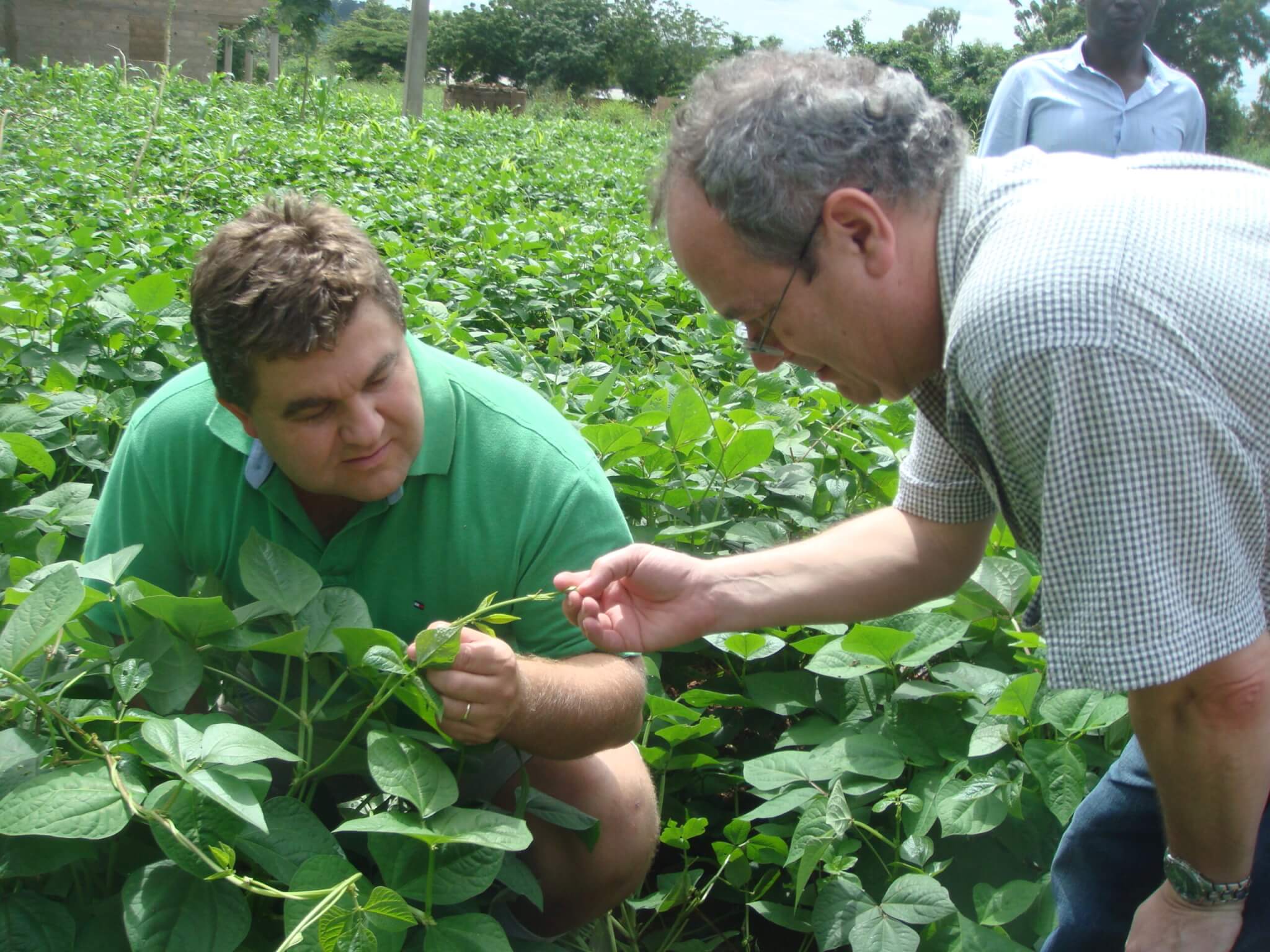When Barry Pittendrigh was offered a position as Purdue’s Osmun Endowed Chair in Urban Entomology, he saw the opportunity as a homecoming.
Pittendrigh has spent the last 13 years in named and endowed professorships at Michigan State University and the University of Illinois, but his roots formed in West Lafayette. He earned his master’s degree in
entomology from Purdue and served as an assistant and associate professor in the Department of Entomology from 2000-2008. Pittendrigh has spent the last 13 years in named and endowed professorships at Michigan State University and the University of Illinois, but his roots for

“It’s really where I started my academic career,” Pittendrigh said. “As a graduate student at Purdue, the people I went to school with became some of my best collaborators. I still work with many of them on a daily basis. When the opportunity presented itself to come back to West Lafayette, I couldn’t pass it up.”
As a researcher, Pittendrigh has focused on the genomic mechanisms that give insects resistance to insecticides as well as working in legume cropping systems in a global context. He’s applied his legume cropping experience in western and southern Africa during his time at Michigan State University (MSU) as director of the Feed the Future Legume Systems Research Innovations Lab. He will continue this work, as director, as part of his efforts at Purdue and the Innovation Lab will remain at MSU. The Innovation Lab, funded for five years through a $13.6 million US Agency for International Development grant, aims to improve sustainability and resilience of legumes in those regions. Prior to that, Pittendrigh spend more than 13 years building a multi-country integrated pest management program in West Africa through programs funded by USAID and the Bill and Melinda Gates Foundation.
“We’ve been supported for doing not only the basic and applied work, but for getting that information out to the people who need it most. That’s also something Purdue does well, bringing together the basic and applied research missions and using Extension and outreach as platforms to deliver it to the public,” Pittendrigh said.
At Illinois, he led a five-year effort to sequence and annotate the body louse genome. His work led to one of his long-term collaborators thanking him in an unusual way. Upon the discovery of a new species of louse, they named the pest Myrsidea pittendrighi.
“My supporters congratulated me, and my detractors said, ‘how appropriate,’” Pittendrigh joked. “In all seriousness, it was a real honor to have this happen. It was totally unexpected and highly appreciated.”
“We’ve been supported for doing not only the basic and applied work, but for getting that information out to the people who need it most. That’s also something Purdue does well, bringing together the basic and applied research missions and using Extension and outreach as platforms to deliver it to the public.”
- Barry Pittendrigh

At Purdue, Pittendrigh will focus much of his efforts on using his knowledge of insect genomics and evolution of resistance to pesticides. He works between model species, such as the fruit fly, and economically important species.
“My core area of research is the molecular basis of pesticide resistance and I am currently focused on evolutionarily conserved pathways in insects that play a role in such resistance,” Pittendrigh said. “Recent work from my laboratory has shown that these pathways are an Achilles’ heel for resistance. That is, they are, in some cases, targets for compounds that can be used to inhibit resistance. I’m interested in applying some of our findings toward management of pesticide resistance in urban pest populations.”
He’s also interested in communicating science to international audiences. Pittendrigh and his longer-term collaborator, professor Julia Bello-Bravo, who will join Purdue’s Department of Agricultural Sciences Education and Communication, founded and launched Scientific Animations Without Borders (SAWBO) in 2011. Bello-Bravo and Pittendrigh co-lead SAWBO, which transforms Extension information into animations in multiple languages that can be used for free for educational purposes.
SAWBO content exists in more than 200 languages, has been used in more than 100 countries, touched well over 45 million people and been used by organizations such as the Food and Agricultural Organization, the World Health Organization, USAID and many large and small non-governmental organizations globally. In West Africa and East Africa, SAWBO materials are on television regularly for tens of millions of viewers.
The adaptability of the SAWBO program recently led Bello-Bravo, John Medendorp (also joining Purdue from MSU), and Pittendrigh to receive a 12-month, $1.6-million USAID grant (called SAWBO RAPID) to tackle educational messaging associated with the secondary impacts of COVID-19.
“Within the context of Purdue’s Urban and Industrial Pest Management Center, I see excellent opportunities to draw upon SAWBO’s tools to develop educational approaches that can be highly inclusive of people across language and cultural groups globally toward issues associated with urban challenges,” Pittendrigh said.
Stephen Cameron, head of Purdue’s Department of Entomology, said Pittendrigh’s many talents will be key for raising the stature of the university’s urban entomology efforts.
“Barry has a unique combination of talents – a world-leader in the science of pesticide resistance, an innovator in how we communicate science to the public, and an ability to build teams second to none – that were vital to moving Urban Entomology forward as a discipline,” Cameron said. “Two phenomena will only gain pace throughout the coming decades – the shift of human populations to cities (urbanization) and the evolution of pesticide resistance in pest insect species. As his program sits right at the intersection of these two trends – urbanization and resistance, Barry is the ideal leader to tackle the problems which they pose.”